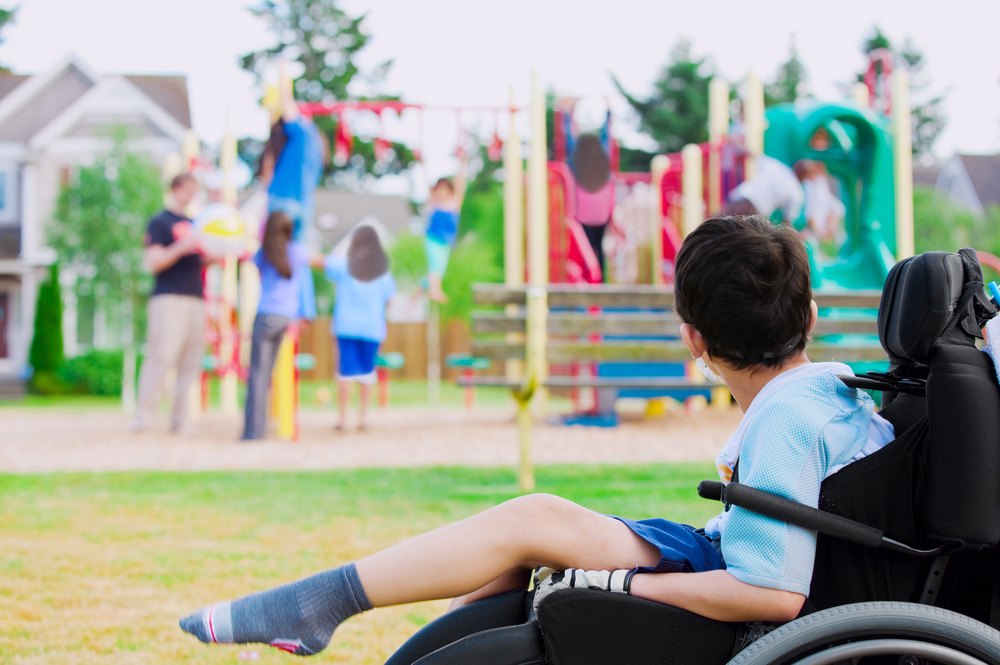Defining Erb’s Palsy
Erb’s Palsy, also known as brachial plexus birth palsy, is a condition that primarily affects newborns, resulting from nerve damage around the shoulder. It is characterized by weakness or paralysis of the arm, with the severity depending on the extent of the nerve injury.
The condition arises when the brachial plexus, a network of nerves that sends signals from the spine to the shoulder, arm, and hand, is stretched or torn. This can occur during a difficult childbirth, particularly when there is excessive pulling on the shoulders during a head-first delivery or pressure on the raised arms during a breech (feet-first) delivery.
Symptoms of Erb’s Palsy may include:
- A limp or paralyzed arm
- Lack of muscle control in the arm, hand, or wrist
- Absence of sensation in the arm or hand
The prognosis for Erb’s Palsy varies, with many infants recovering movement within the first few months of life. However, some may require intervention to improve function and prevent long-term disability. Early diagnosis and treatment are crucial in achieving the best possible outcomes for affected children.
Anatomy of Brachial Plexus Injuries
The brachial plexus is a complex network of nerves that extends from the spinal cord, through the neck, and into the arm. These nerves are responsible for the movement and sensation in the upper limb. An injury to the brachial plexus can occur when there is excessive stretching, compression, or tearing of these nerves.
Injuries to the brachial plexus can be categorized based on their severity:
- Avulsion: The nerve is torn from the spinal cord.
- Rupture: The nerve is torn but not at the spinal cord.
- Neuroma: Scar tissue puts pressure on the injured nerve.
- Neuropraxia: The nerve is stretched but not torn.
The location and type of injury determine the symptoms and prognosis for recovery. Early intervention is crucial in cases of brachial plexus injuries to minimize long-term impact and maximize the potential for recovery.
Risk Factors and Incidence Rates
Erb’s Palsy, a form of brachial plexus injury, is more likely to occur in certain birth scenarios. The incidence rates vary, but it is estimated that one to two infants per 1,000 live births are affected by this condition. Key risk factors include:
- Macrosomia, a term describing larger-than-average newborns, often due to gestational diabetes.
- Breech deliveries, where the baby is positioned feet-first, increasing the likelihood of shoulder dystocia.
- Prolonged labor, which can result in excessive pressure on the baby’s neck and shoulders.
- Instrument-assisted deliveries, such as the use of forceps or vacuum extraction, which may exert additional force on the brachial plexus.
Understanding these risk factors is crucial for healthcare providers to anticipate potential complications and prepare for interventions. Moreover, the identification of high-risk pregnancies allows for the consideration of alternative delivery methods, such as cesarean sections, to reduce the chances of Erb’s Palsy. Despite these measures, not all cases can be prevented, underscoring the importance of early detection and treatment to minimize long-term impact.
The Importance of Early Detection
Recognizing the Signs and Symptoms
Early detection of Erb’s Palsy is crucial for minimizing its impact on a child’s life. The condition typically becomes apparent shortly after birth, and awareness of its signs is essential for parents and healthcare providers.
Key symptoms include:
- A lack of movement in the infant’s upper arm or shoulder
- An arm that is bent at the elbow and held against the body
- Decreased grip strength in the hand on the affected side
- Absence of Moro reflex on the affected side
Parents may notice that their child does not move one arm or seems to have an unusual posture. It is important to report these observations to a pediatrician as soon as possible. Timely recognition of these symptoms allows for prompt referral to specialists and the initiation of appropriate interventions.
Diagnostic Procedures for Erb’s Palsy
The diagnosis of Erb’s Palsy is a critical step in ensuring timely and effective intervention. Initially, a thorough medical history and physical examination are conducted, focusing on the affected arm’s range of motion, muscle strength, and reflexes. The following diagnostic tools may be employed to confirm the diagnosis and assess the extent of nerve damage:
- Neurological Examination: To evaluate the sensory and motor function of the arm.
- Imaging Tests: Such as X-rays or ultrasounds, to rule out fractures or dislocations that may mimic or accompany nerve injuries.
- Electromyography (EMG): To measure the electrical activity of muscles and identify nerve damage.
- Nerve Conduction Studies (NCS): To assess the speed and strength of signals traveling through the nerves.
In some cases, Magnetic Resonance Imaging (MRI) may be utilized to provide a detailed view of the brachial plexus and surrounding tissues. Early and accurate diagnosis allows for the development of a tailored treatment plan, which is essential for optimizing the recovery process and minimizing long-term complications.
The Role of Pediatric Assessment
Pediatric assessment plays a crucial role in the early intervention of Erb’s Palsy. It involves a thorough evaluation by healthcare professionals to determine the extent of nerve damage and to guide the course of treatment. The assessment typically includes a series of steps:
- A detailed medical history of the mother and child to identify any risk factors associated with obstetric brachial plexus injuries.
- A physical examination of the infant to assess muscle weakness, range of motion, and reflexes.
- Neurological tests to evaluate the sensory and motor function of the affected limb.
The findings from the pediatric assessment inform the treatment plan. Treatment for obstetric brachial plexus injuries may include splinting, passive exercises, and, in some cases, surgical options. The assessment also helps in identifying the need for additional support services such as physical therapy or occupational therapy. For infants with persistent issues, surgery may be considered to improve function. It is important to note that the success of early intervention often hinges on the timely and accurate diagnosis made during the pediatric assessment.
Intervention Strategies for Erb’s Palsy
Physical Therapy and Rehabilitation
Physical therapy plays a crucial role in the management of Erb’s Palsy, aiming to improve the range of motion and strength in the affected arm. The intervention typically begins with a thorough assessment by a qualified physical therapist, who will tailor a program to the child’s specific needs.
The rehabilitation process often includes:
- Gentle stretching exercises to prevent joint stiffness
- Strengthening exercises to build muscle
- Neuromuscular re-education to improve movement patterns
Parents and caregivers are also educated on how to assist with exercises at home, ensuring that therapy continues beyond the clinical setting. Consistency in performing these exercises is key to maximizing recovery potential. Moreover, the therapist may employ techniques such as electrical stimulation or hydrotherapy to further enhance the treatment outcomes.
Early intervention with physical therapy not only helps in reducing the long-term impact of Erb’s Palsy but also supports the child’s overall development and integration into daily activities. It is essential for families to have access to accurate information on birth injuries, including Erb’s Palsy, to understand the importance of such interventions.
Surgical Options and Outcomes
For some individuals with Erb’s Palsy, surgery may be a viable option to improve function and reduce disability. The decision to proceed with surgical intervention typically depends on the severity of the nerve injury and the lack of progress with non-surgical treatments.
Surgical procedures can range from nerve grafts to muscle transfers, and the choice of surgery is tailored to the patient’s specific condition. The outcomes of these surgeries are generally positive, with many patients experiencing significant improvements in movement and strength. However, it is important to set realistic expectations, as full recovery may not be possible in all cases.
- Nerve grafting involves replacing damaged sections of the nerve with sections from another part of the body.
- Neurolysis is a procedure to remove scar tissue that may be compressing the nerve.
- Muscle transfers can help restore function by rerouting muscles from other parts of the body to the affected limb.
Postoperative care is crucial for a successful recovery, and it includes physical therapy, regular follow-ups, and sometimes additional interventions. The long-term outcomes can vary, but early surgical intervention has been shown to improve the prognosis for many children with Erb’s Palsy.
Occupational Therapy and Home Exercises
Occupational therapy plays a crucial role in the management of Erb’s Palsy, focusing on improving the child’s ability to perform daily activities. Through personalized care plans, therapists aim to enhance fine motor skills, strength, and coordination. Home exercises complement these efforts, allowing for consistent practice and progress.
Key components of occupational therapy include:
- Task-specific training to develop skills for daily living
- Sensory integration therapy to address any sensory deficits
- Adaptive techniques and equipment to facilitate independence
Parents and caregivers are provided with a comprehensive guide to support their child’s development. This includes strategies for integrating therapeutic activities into the child’s routine and making modifications to the home environment to encourage self-sufficiency. In cases where progress is limited, families may seek additional resources, such as legal help or community support, to ensure their child receives the best possible care.
Family Support and Education
Counseling for Parents and Caregivers
The journey of managing Erb’s Palsy is not only a physical challenge for the child but also an emotional and psychological one for the parents and caregivers. Counseling services play a crucial role in providing the necessary support to families as they navigate through the complexities of the condition.
Professional counselors can offer:
- Emotional support to help parents cope with their child’s diagnosis and the uncertainties that lie ahead.
- Strategies for effective communication with their child, healthcare providers, and within the family unit.
- Guidance on how to strengthen the family’s resilience and adapt to new routines and challenges.
Moreover, counseling can assist in addressing any feelings of guilt or blame that parents might harbor, and promote a positive outlook towards the child’s recovery and development. It is an essential component of a holistic approach to managing Erb’s Palsy, ensuring that the emotional well-being of the entire family is attended to alongside the physical rehabilitation of the child.
Educational Resources and Support Groups
Navigating the complexities of Erb’s Palsy extends beyond medical treatment; it involves educating and empowering families to understand and advocate for their child’s needs. Access to educational resources and support groups is crucial in this journey.
Families can benefit from a variety of resources:
- Comprehensive guides and brochures that explain Erb’s Palsy in layman’s terms.
- Online platforms and forums where parents can share experiences and advice.
- Workshops and webinars conducted by healthcare professionals to educate about the condition and its management.
Support groups play a pivotal role in providing emotional and practical support. They offer a space for parents and caregivers to connect with others facing similar challenges, exchange information, and find solace in shared experiences. Additionally, these groups often bring awareness to the broader community, advocating for better services and support for children with Erb’s Palsy.
For families seeking legal advice, organizations like the Birth Injury Lawyers Group offer nationwide assistance for birth injury cases. They provide support, compensation, and answers to families affected by medical errors, ensuring that the child’s rights and future are protected. A free consultation can be a valuable first step for those considering legal action.
Navigating Healthcare and Insurance Systems
Navigating the complex landscape of healthcare and insurance systems is a critical aspect of managing Erb’s Palsy. Families often face the daunting task of understanding coverage options, out-of-pocket costs, and the intricacies of insurance claims. It is essential for parents and caregivers to become well-informed about their insurance policies and the extent to which they cover the necessary treatments for Erb’s Palsy.
Key steps in navigating these systems include:
- Identifying the right health insurance plan that covers a range of interventions, including physical therapy, occupational therapy, and potential surgical procedures.
- Understanding the pre-authorization process for certain treatments and the documentation required to support medical necessity.
- Keeping meticulous records of all medical visits, treatments received, and correspondence with insurance companies.
- Seeking assistance from hospital financial counselors or patient advocates who can provide guidance and support in dealing with insurance matters.
In addition to dealing with insurance, families must also be aware of government assistance programs and community resources that can offer financial aid or services at reduced costs. Staying informed about these options can alleviate some of the financial burdens and ensure that children with Erb’s Palsy receive the care they need without undue delay.
Advancements in Treatment and Research
Innovations in Surgical Techniques
Recent advancements in surgical techniques have significantly improved the outcomes for individuals with Erb’s Palsy. Surgeons are now utilizing minimally invasive procedures that reduce recovery time and enhance precision during nerve repairs. Microsurgery, in particular, has become a cornerstone in treating brachial plexus injuries, allowing for the delicate reconnection of nerves with minimal scarring.
Key innovations include:
- Nerve Transfers: Surgeons can reroute working nerves from other parts of the body to restore function in the affected limb.
- Nerve Grafting: Damaged sections of nerves are replaced with grafts from the patient’s own body or from a donor, facilitating nerve regeneration.
- Endoscopic Techniques: These procedures use small cameras and instruments to perform surgery through tiny incisions, leading to less tissue damage and faster healing.
These cutting-edge approaches are complemented by intraoperative nerve monitoring, which provides real-time feedback on nerve function, helping to prevent inadvertent damage during surgery. As research continues, the potential for robotic assistance and bioengineered nerve conduits is being explored, promising even greater precision and better outcomes for patients with Erb’s Palsy.
Emerging Therapies and Clinical Trials
As the medical community continues to seek improvements in the management of Erb’s Palsy, a number of emerging therapies are being explored. Clinical trials play a pivotal role in this exploration, serving as the bridge between innovative concepts and real-world applications.
- Neuroregenerative treatments: These aim to repair the damaged nerves and improve function. Research is ongoing to determine the efficacy of stem cell therapy and nerve growth factors in nerve regeneration.
- Electrical stimulation therapies: Non-invasive electrical stimulation has shown promise in enhancing nerve repair and muscle function. Clinical trials are assessing the optimal parameters for stimulation.
- Robot-assisted therapy: This cutting-edge approach uses robotic devices to assist with repetitive movements, potentially improving motor function over time.
The Stanford Medicine Children’s Health website is a valuable resource for patients and families affected by Erb’s Palsy, providing information on services, doctors, and research. It emphasizes precision medicine and advanced technologies, which are integral to the development of these emerging therapies.
The Future of Erb’s Palsy Management
As medical science advances, the management of Erb’s Palsy continues to evolve, promising improved outcomes for affected individuals. Research is currently underway to develop more precise diagnostic tools that can identify the extent of nerve damage with greater accuracy, facilitating tailored treatment plans.
Innovative treatment approaches are also being explored, including the use of stem cell therapy and nerve growth factors that aim to repair and regenerate damaged nerves. These emerging therapies hold the potential to significantly enhance recovery and function.
The integration of technology in rehabilitation, such as robotic-assisted therapy and virtual reality, is another area of interest. These technologies offer engaging and effective ways to perform exercises that are critical for recovery, potentially speeding up the rehabilitation process.
- Precise diagnostic tools for tailored treatments
- Stem cell therapy and nerve growth factors for nerve repair
- Robotic-assisted therapy and virtual reality in rehabilitation
Collaboration across disciplines, including neurology, orthopedics, and physical therapy, is key to advancing the management of Erb’s Palsy. As these fields converge, the future looks brighter for those affected by this condition, with the hope of restoring function and improving quality of life.




